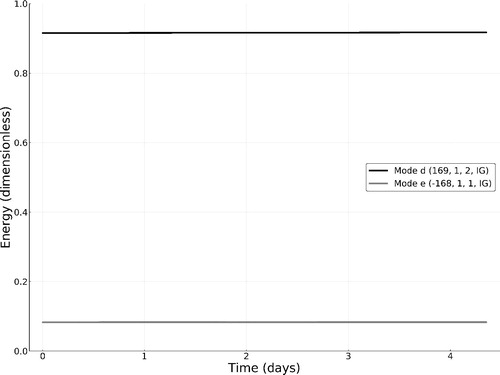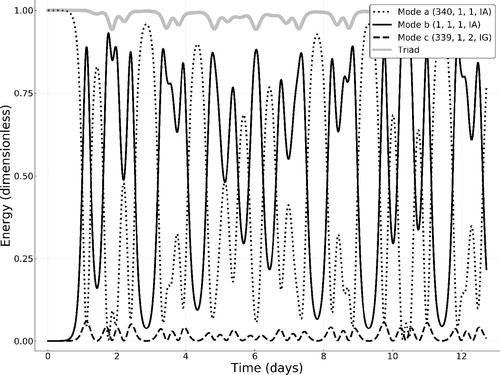Figures & data
Table 1. Definition of variables, symbols and operators.
Fig. 1. Dispersion curves of inertia-acoustic (AI) and inertia-gravity (IG) waves corresponding to the first three baroclinic modes m = 1, 2, 3. All the curves are referred to the meridional index n = 1.
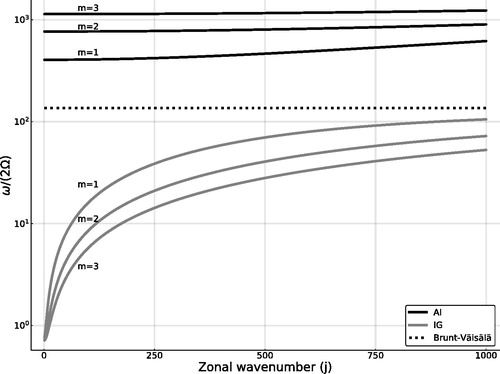
Fig. 2. Similar to , but only for the inertia-gravity waves (IG) and their corresponding dispersion curves obtained by hydrostatic approximation (H).

Table 2. Representative examples of interacting triads involving inertia-acoustic (IA) and inertia-gravity modes (IG).
Fig. 3. Time evolution of the mode quadratic energies associated with the solution of the three-wave interaction Equationequations (33)(33a)
(33a) for the modes of Triad 3 of . The present triad is non-resonant.
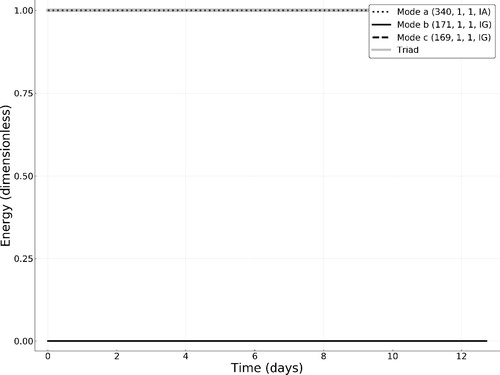
Fig. 4. Time evolution of the mode quadratic energies associated with the solution of the three-wave interaction Equationequations (33)(33a)
(33a) for the modes of Triad 1 of . The present triad is nearly resonant.
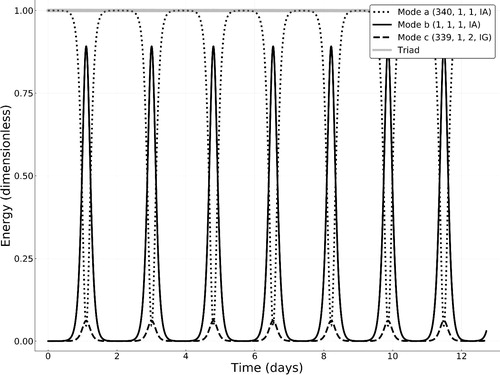
Fig. 5. Numerical solution of the linearized system (39) composed of modes (170,1,2,IG) and (169,1,2,IG) of Triad 2. These modes are parametrically forced by the mode (339, 1, 2, IG) of Triad 1. This solution presents a maximal Lyapunov exponent

Fig. 6. Numerical solution of the linearized system (39) composed of modes (170,1,1,IG) and (169,1,1,IG) of Triad 13. These modes are parametrically forced by the mode (339, 1, 2, IG) of Triad 1. This solution presents a maximal Lyapunov exponent
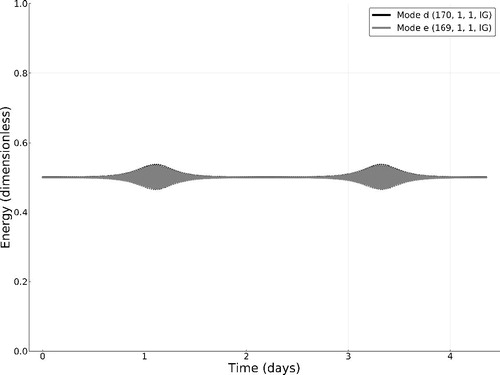
Fig. 7. Numerical solution of the linearized system (39) composed of modes (169,1,2,IG) and (–168,1,1,IG) of Triad 15. These modes are parametrically forced by the mode (1, 1, 1, IA) of Triad 1. This solution presents a maximal Lyapunov exponent
